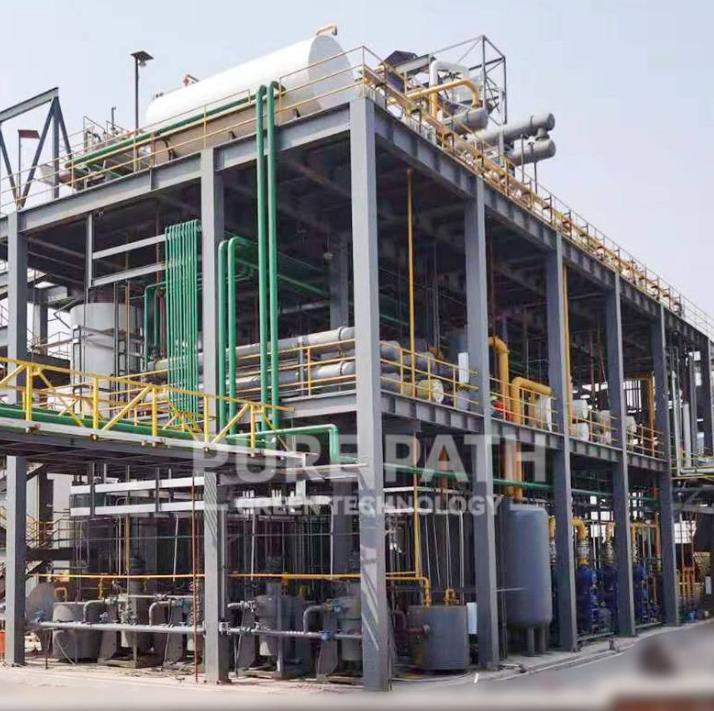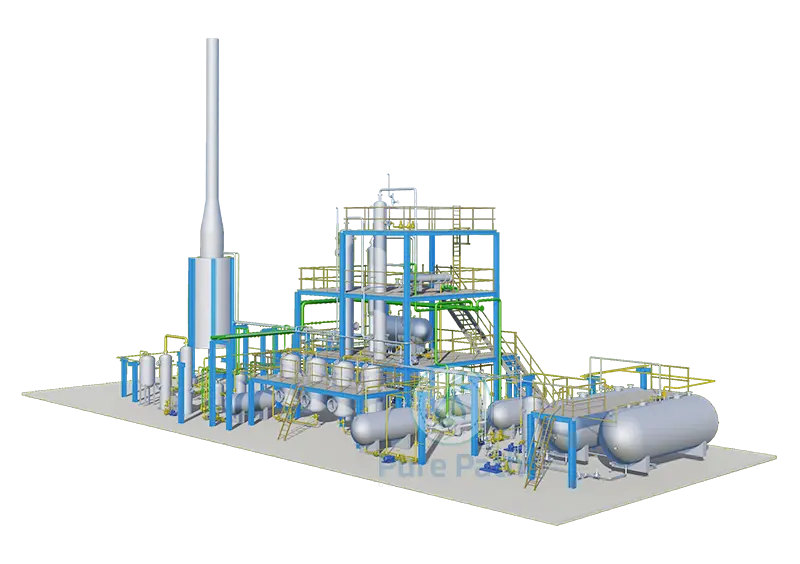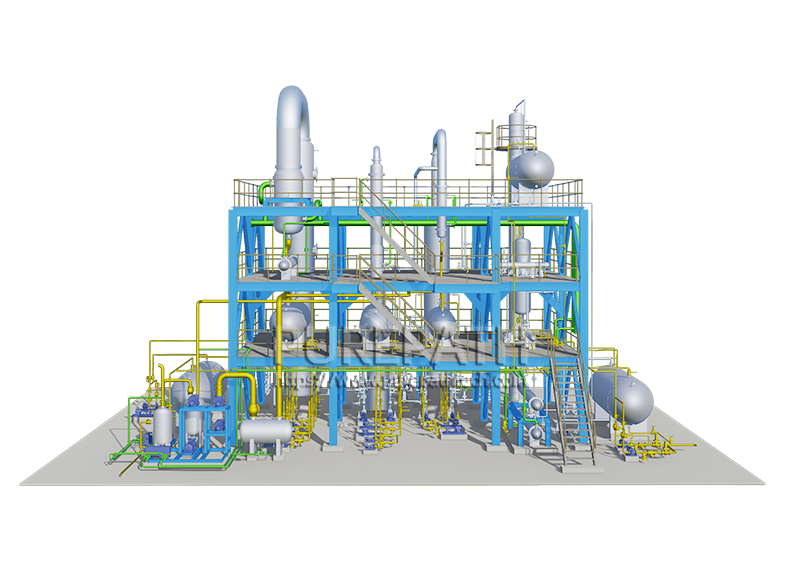Comparing Re-Refined Base Oil vs. Virgin Base Oil: Quality & Cost
We have seen in the last couple of years a significant change in the way base oil sourcing is considered both by the lubricant manufacturer and the industrial end-user. This emerging trend has become increasingly important with various factors coming together: the fluctuating price of crude oil feedstock, stringent environmental regulations, and ESG commitments. In the wake of this, many of these companies seriously consider recycled base oils as a route to cost control, supply stability, and reduced emissions, particularly those refined using advanced recycling processes from used engine oils.
The question is no longer just whether the recycled oils are effective. Today, customers are asking:
- Can re-refined base oils consistently meet Group II or Group III emission specifications?
- How does the oxidation stability, purity, and service life compare to virgin base oils?
- Where does the real cost advantage lie-not just in feedstock, but also in operations?
These are practical, investment-driven questions—and the answers have changed dramatically as refining technologies have matured. The following comparisons reflect what we see in today’s real industrial market, not some theoretical assumptions.
What Is Re-Refined Base Oil and How Is It Produced?

Rerefined base oil is much more than filtered used oil; it is a fully engineered product designed to meet high-performance standards.
- The process starts with the collection of waste engine oil, which is a mixture of water, fuel residues, and metallic contaminants. These impurities are removed in the first instance by dehydrating and separating sediments, ensuring that subsequent processing can start clean.
- It is followed by vacuum distillation, which is a very crucial stage in separating the usable hydrocarbon fractions from residues. This step largely determines the viscosity and thermal stability of the final base oil.
- Following distillation, the oil is hydrotreated and filtered, a process that removes sulfur and nitrogen, oxidation by-products, and trace metals. Advanced facilities may then apply catalytic hydrogenation or deep clay treatment to further enhance performance properties such as oxidation stability and color.
The result is a re-refined base oil that can match Group II and III virgin base oils in quality but with significantly less environmental impact. Unlike crude oil refining, re-refining preserves most of the high-quality hydrocarbons already present in used oil, making it more energy-efficient.
Using proper feedstock control and consistent process management, modern re-refining plants can produce base oils suitable for automotive, industrial, and marine lubricants—delivering both reliability and cost-effectiveness.
What Is Virgin Base Oil and How Is It Made?
Virgin base oil is the traditional feedstock for lubricants, produced directly from crude oil through controlled successive refining processes. Unlike re-refined base oil, which starts with used engine oil, virgin base oil begins from fresh crude fractions that must go through several stages before achieving the required purity and performance.

The production process begins with atmospheric and vacuum distillation, separating crude into various fractions. The fraction destined for base oil undergoes solvent extraction to remove aromatics and impurities, followed by dewaxing to improve low-temperature fluidity. Finally, hydrotreating or hydrocracking is applied to reduce sulfur, nitrogen, and other contaminants, resulting in a stable, colorless product. This final product is categorized into Groups I, II, or III based on sulfur content, saturation level, and viscosity index.
Virgin base oil indeed features consistent quality and is usually required in high-performance applications, such as premium engine oils or industrial lubricants where thermal stability and oxidation resistance are critical. However, this process is highly resource-intensive as it consumes a huge amount of energy and crude oil, thus contributing to higher costs and a larger environmental footprint than the re-refining process of used engine oil. Despite such challenges, virgin base oil remains the benchmark for many lubricant manufacturers across the world.
Re-Refined Base Oil vs. Virgin Base Oil: Quality Comparison
Various technical properties determine the suitability of either re-refined base oil or virgin base oil for lubricants. Modern re-refining of used engine oil has significantly narrowed the quality gap, making re-refined oil a reliable alternative in most industrial and automotive applications. The table below summarizes some key differences.
| Property | Re-Refined Base Oil | Virgin Base Oil | Notes |
| Viscosity Index | Comparable to Group II–III | Group I–III | Hydrotreating ensures consistent viscosity for re-refined oils. |
| Oxidation Stability | High with modern hydrotreating | High | Both provide strong resistance to thermal and oxidative degradation. |
| Sulfur & Impurities | Very low after processing | Low | Re-refined oil removes metals, nitrogen, and oxidation products effectively. |
| Metals & Contaminants | Minimal after treatment | Minimal | Quality depends on feedstock control and process rigor. |
| Color & Appearance | Clear, stable | Clear, stable | Modern finishing ensures re-refined oil matches virgin oil standards. |
| Consistency / Reliability | High if feedstock & process are controlled | Naturally high | Virgin oil has inherent uniformity; re-refined oil can achieve similar consistency with proper QA. |
With advanced technologies, re-refined base oil can match virgin base oil for most performance aspects: it provides equivalent wear protection, oxidation resistance, and deposit control when blended into finished lubricants. In most industrial and automotive applications, technical sufficiency is obtained with re-refined oils, while these have the added advantages of cost and environmental benefits.

Cost Comparison Between Re-Refined and Virgin Base Oil
Among the major benefits of re-refined base oil over virgin base oil, cost efficiency is perhaps the foremost. Manufacturers can significantly reduce the overall costs of high-quality base oil production through re-refining of used engine oil. This process provides a lower and more stable cost compared with crude-derived virgin base oil. Some key cost factors are summarized in the table below.
| Cost Factor | Re-Refined Base Oil | Virgin Base Oil | Notes |
| Feedstock Price | Lower and stable | High and volatile | Used oil is often collected locally; crude oil prices fluctuate globally. |
| Energy Consumption | Moderate | High | Re-refining consumes less energy than crude oil refining. |
| Production Infrastructure | Medium investment | High investment | Re-refining plants are smaller and modular; crude refining requires large-scale facilities. |
| Environmental / Carbon Costs | Lower | Higher | Recycling reduces carbon footprint, saving potential regulatory or tax costs. |
| Transportation / Logistics | Lower | Higher | Local collection of used oil reduces transport distances. |
| Overall Production Cost | 10–30% lower | Higher | Depends on feedstock quality and process efficiency. |
Key Insights:
- Re-refined base oil provides substantial economic benefits with no compromise on quality.
- Long-term operational budgets are more predictable due to feedstock price stability.
- For large lubricant manufacturers or fleet operators, the savings can be significant, while re-processed oil is a more viable, greener alternative to virgin base oil.
Coupling technical parity in performance with lower production cost, re-refined base oil is a strong contender in the market today, especially for industries that have to balance quality, cost, and environmental impact.
Which One Is Better?
The selection of re-refined base oil versus virgin base oil is based on applications, performance needs, and sustainability objectives. Today, re-refined oils, in fact, achieve quality comparable to Group II-III virgin base oils for most automotive, industrial, and marine lubricants. They provide dependable wear protection, oxidation stability, and deposit control while offering clear cost and environmental advantages.
Virgin base oil remains the preferred choice for those highly specialized applications that require ultra-high performance-such as aerospace lubricants or premium racing oils-in which extreme thermal stability and consistency are paramount.

For the majority of users—fleet operators, lubricant manufacturers, and industrial plants—re refined base oil produced in a well-managed waste engine oil re refining plant offers the optimal balance between cost, quality, and sustainability. It supports a circular economy and reduces carbon footprint without any operational compromise on reliability. In practice, selecting re-refined oil can yield both economic and environmental benefits that make it a strategic choice for forward-looking businesses.
Summary
Waste engine oil re-refining plants currently produce re-refined base oil that meets Group II-III virgin base oil quality with equivalent viscosity, oxidation stability, and cleanliness. Since the oil ensures very good performance, most industrial and automotive applications offer a significant reduction in production costs and, subsequently, environmental impact. Virgin base oil is still needed in certain high-performance applications; for general industrial and automotive use, however, investment in re-refined base oil from a well-managed re-refining plant is one of the cost-effective, sustainable alternatives that also contributes to the circular economy goals and long-term operational efficiency.







